Related Research Articles

Dragon is one of the two official magazines for source material for the Dungeons & Dragons role-playing game and associated products, along with Dungeon.
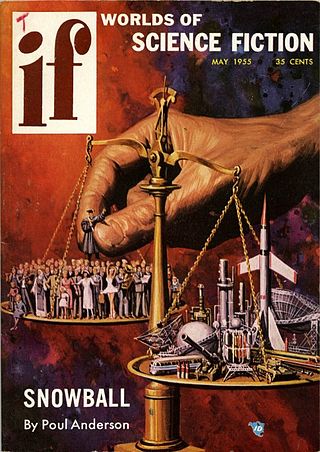
If was an American science fiction magazine launched in March 1952 by Quinn Publications, owned by James L. Quinn.

Ellery Queen's Mystery Magazine is a bi-monthly American digest size fiction magazine specializing in crime fiction, particularly detective fiction, and mystery fiction. Launched in fall 1941 by Mercury Press, EQMM is named after the fictitious author Ellery Queen, who wrote novels and short stories about a fictional detective named Ellery Queen. From 1993, EQMM changed its cover title to be Ellery Queen Mystery Magazine, but the table of contents still retains the full name.

Science Fantasy, which also appeared under the titles Impulse and SF Impulse, was a British fantasy and science fiction magazine, launched in 1950 by Nova Publications as a companion to Nova's New Worlds. Walter Gillings was editor for the first two issues, and was then replaced by John Carnell, the editor of New Worlds, as a cost-saving measure. Carnell edited both magazines until Nova went out of business in early 1964. The titles were acquired by Roberts & Vinter, who hired Kyril Bonfiglioli to edit Science Fantasy; Bonfiglioli changed the title to Impulse in early 1966, but the new title led to confusion with the distributors and sales fell, though the magazine remained profitable. The title was changed again to SF Impulse for the last few issues. Science Fantasy ceased publication the following year, when Roberts & Vinter came under financial pressure after their printer went bankrupt.
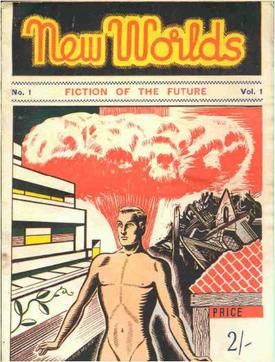
New Worlds was a British science fiction magazine that began in 1936 as a fanzine called Novae Terrae. John Carnell, who became Novae Terrae's editor in 1939, renamed it New Worlds that year. He was instrumental in turning it into a professional publication in 1946 and was the first editor of the new incarnation. It became the leading UK science fiction magazine; the period to 1960 has been described by science fiction historian Mike Ashley as the magazine's "Golden Age".
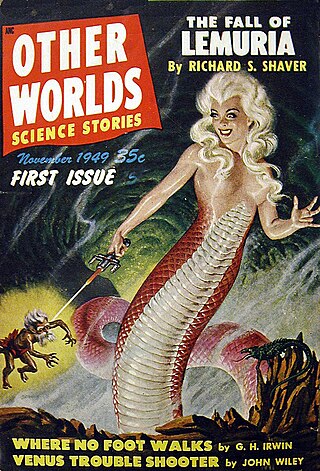
Other Worlds, Universe Science Fiction, and Science Stories were three related US magazines edited by Raymond A. Palmer. Other Worlds was launched in November 1949 by Palmer's Clark Publications and lasted for four years in its first run, with well-received stories such as "Enchanted Village" by A. E. van Vogt and "Way in the Middle of the Air", one of Ray Bradbury's "Martian Chronicle" stories. Since Palmer was both publisher and editor, he was free to follow his own editorial policy, and presented a wide array of science fiction.

Starlog was a monthly science fiction magazine that was created in 1976 and focused primarily on Star Trek at its inception. Kerry O'Quinn and Norman Jacobs were its creators and it was published by Starlog Group, Inc. in August 1976. Starlog was one of the first publications to report on the development of the first Star Wars movie, and it followed the development of what was to eventually become Star Trek: The Motion Picture (1979).
Locus: The Magazine of The Science Fiction & Fantasy Field, founded in 1968, is an American magazine published monthly in Oakland, California. It is the news organ and trade journal for the English-language science fiction and fantasy fields. It also publishes comprehensive listings of all new books published in the genres. The magazine also presents the annual Locus Awards. Locus Online was launched in April 1997, as a semi-autonomous web version of Locus Magazine.
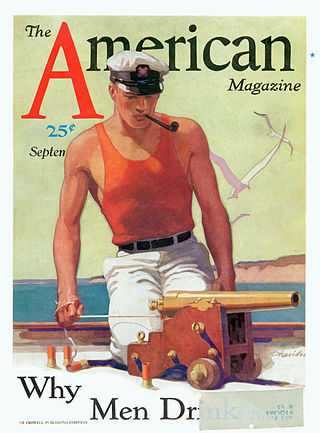
The American Magazine was a periodical publication founded in June 1906, a continuation of failed publications purchased a few years earlier from publishing mogul Miriam Leslie. It succeeded Frank Leslie's Popular Monthly (1876–1904), Leslie's Monthly Magazine (1904–1905), Leslie's Magazine (1905) and the American Illustrated Magazine (1905–1906). The magazine was published through August 1956.

Scribner's Magazine was an American periodical published by the publishing house of Charles Scribner's Sons from January 1887 to May 1939. Scribner's Magazine was the second magazine out of the Scribner's firm, after the publication of Scribner's Monthly. Charles Scribner's Sons spent over $500,000 setting up the magazine, to compete with the already successful Harper's Monthly and The Atlantic Monthly. Scribner's Magazine was launched in 1887, and was the first of any magazine to introduce color illustrations. The magazine ceased publication in 1939.

WWE Magazine was the official professional wrestling magazine of WWE. This incarnation of the magazine contains lifestyle sections, a monthly calendar, entertainment, work out tips, and other information. It was announced in July 2014 that after thirty years, the magazine would cease production, although special issues would continue to be published.
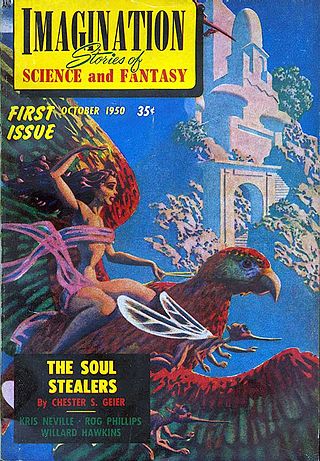
Imagination was an American fantasy and science fiction magazine first published in October 1950 by Raymond Palmer's Clark Publishing Company. The magazine was sold almost immediately to Greenleaf Publishing Company, owned by William Hamling, who published and edited it from the third issue, February 1951, for the rest of the magazine's life. Hamling launched a sister magazine, Imaginative Tales, in 1954; both ceased publication at the end of 1958 in the aftermath of major changes in US magazine distribution due to the liquidation of American News Company.
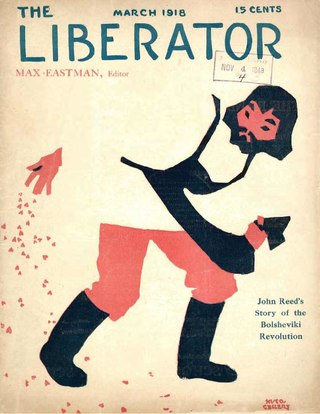
The Liberator was a monthly socialist magazine established by Max Eastman and his sister Crystal Eastman in 1918 to continue the work of The Masses, which was shut down by the wartime mailing regulations of the U.S. government. Intensely political, the magazine included copious quantities of art, poetry, and fiction along with political reporting and commentary. The publication was an organ of the Communist Party of America (CPA) from late 1922 and was merged with two other publications to form The Workers Monthly in 1924.
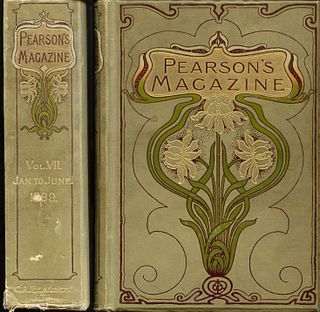
Pearson's Magazine was a monthly periodical that first appeared in Britain in 1896. A US version began publication in 1899. It specialised in speculative literature, political discussion, often of a socialist bent, and the arts. Its contributors included Upton Sinclair, George Bernard Shaw, Maxim Gorky, George Griffith, H. G. Wells, Rudyard Kipling, Rafael Sabatini, Dornford Yates and E. Phillips Oppenheim, many of whose short stories and novelettes first saw publication in Pearson's.
Asahi Shimbun Publications Inc. is the publishing arm of The Asahi Shimbun Company, publishing books, magazines, and manga. It replaced Asahi Sonorama (朝日ソノラマ) on 1 April 2008 just after it went bankrupt.

Famous Fantastic Mysteries was an American science fiction and fantasy pulp magazine published from 1939 to 1953. The editor was Mary Gnaedinger. It was launched by the Munsey Company as a way to reprint the many science fiction and fantasy stories which had appeared over the preceding decades in Munsey magazines such as Argosy. From its first issue, dated September/October 1939, Famous Fantastic Mysteries was an immediate success. Less than a year later, a companion magazine, Fantastic Novels, was launched.
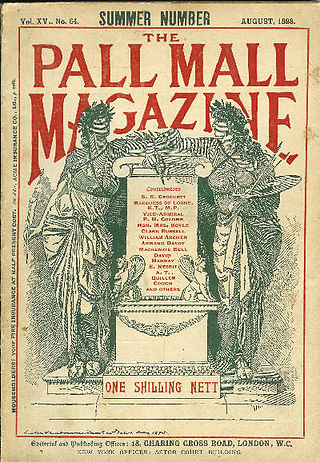
The Pall Mall Magazine was a monthly British literary magazine published between 1893 and 1914. Begun by William Waldorf Astor as an offshoot of The Pall Mall Gazette, the magazine included poetry, short stories, serialized fiction, and general commentaries, along with extensive artwork. It was notable in its time as the first British magazine to "publish illustrations in number and finish comparable to those of American periodicals of the same class" much of which was in the late Pre-Raphaelite style. It was often compared to the competing publication The Strand Magazine; many artists, such as illustrator Sidney Paget and author H. G. Wells, sold freelance work to both.

Atlas Publications was an Australian publishing company which operated from 1948 until 1958 and was based in Clifton Hill, a suburb of Melbourne. It published magazines and popular fiction, and the genre for which it was best known, adventure comics. It had no relation to the American company Atlas Comics which was active in the same period.

Uchusen, also known as Space Magazine Uchusen, is a Japanese magazine about science fiction and tokusatsu films, television series, and other media. First published in 1980 by the company Asahi Sonorama, the magazine's publication frequency alternated between quarterly and bi-monthly over time before it temporarily ceased publication in 2005.
References
- ↑ The Wandering Years, Katharine Tynan. Ireland: Houghton Mifflin, 1922, pp. 269-270
- ↑ WorldCat
- ↑ Magazine Data